Major reform of VAT on trade within the EU begins
The transitional régime for intra-Community trade introduced more than 25 years ago is to be replaced by a definitive VAT system. On 4 October 2017, the EU Commission published the first draft proposals for the amendments to the Council Directives and explained the new system’s basic structure.
Major reform of VAT on trade within the EU begins
The transitional régime for intra-Community trade introduced more than 25 years ago is to be replaced by a definitive VAT system. On 4 October 2017, the EU Commission published the first draft proposals for the amendments to the Council Directives and explained the new system’s basic structure.
1. Transition phase / certified taxpayer
In the first phase (divided into two sub stages), the taxation of intra-Community supplies is to be substantially modified in the period upto 2022. From that date (phase 2) all cross border deliveries of goods (and services) will be handled in the same way as domestic supplies in the Member State of destination and be subject to the VAT rate applicable there. Generally, the supplier will be liable to pay the VAT of the country of destination to the tax authority of its country of establishment through a one-stop shop.
However, during the first phase, as an exception and transitional solution, the VAT liability may be shifted to the acquirer if the acquirer has the status of a certified taxpayer (Art. 13a VAT Directive). In order to obtain this status, the taxpayer must not have committed (i) any serious or repeated infringements of taxation rules or customs legislation or any serious criminal offenses relating to the economic activity. He must also be able (ii) to demonstrate a high level of control of his operations and of the flow of goods; and (iii) evidence financial solvency. If the applicant is a taxable person, who has been granted the status of an authorized economic operator for customs purposes, these criteria shall be deemed to have been fulfilled.
2. Final phase
In the second phase, the destination principle is to be extended to all goods and services. Only the suppliers will then be liable to pay the VAT for all supplies of goods and services. However, this extension will only take place, at the earliest, five years after the introduction and evaluation of the first phase.
3. Quick Fixes
While the final VAT system is being introduced during the next few years, the current system is to be improved in the short-term in the following areas:
- Consignment stocks(Art. 17a VAT Directive): The intra-Community transfer of goods to the Member State of destination, followed by the local supply shall be treated as a direct intra-Community supply under certain criteria. The supplier and the customer must both be ‘certified taxpayers’.
- VAT-ID-No.(Art. 138 para. 1 VAT Directive): The VAT exemption for intra-Community supplies will be subject to the additional requirement that the customer is registered for VAT purposes (and has a valid VAT number) in another Member State. In addition, the supply must also be included in the EC Sales list. Hence, the VAT-ID-no. listed in VIES will become a material requirement for the application of the VAT exemption to the intra-EU supply.
- Chain transactions(Art. 138a VAT Directive): For chain transactions where the intermediary is responsible for the transport and the first supplier as well as the intermediary are certified taxpayers, uniform regulations as to how the transport is to be ascribed are to be introduced. The transport is to be ascribed to the supply of the supplier to the intermediary, if (i) the intermediary communicates the name of the Member State of destination and (ii) the intermediary is registered in a Member State other than that in which the transport begins.
These amendments are expected to come into force as of 1 January 2019.
In addition, uniform regulations to evidence the transport of the goods in an intra-EU supply outside of the member state of departure should be included as an amendment to the EU Regulation 282/2011 for certified taxpayers.
4. Conclusion
The transition to the final system is the largest reform of the VAT system since the introduction of the EU Single Market. This results in considerable need for change, especially for sales, accounting and IT departments. Companies should therefore adapt to this new situation and draw up a road map. In particular, tax finding projects should be adapted.
Companies will also have no other option than to apply for the status of certified taxpayer. If companies do not already have the status of an authorized economic operator for customs purposes, they should apply for it as soon as possible in order to be prepared well in advance. Alternatively, the status of certified taxpayer would need to be applied for as soon as the new regulations are adopted and implemented in to German law.
The planned new regulations on chain transactions in the German VAT Act was put on hold due to the proposal for a Council Directive. Furthermore, the German Ministry of Finance will not publish a circular prior to the implementation of the Council Directives which is to be carried out by the end of 2018.
The above information was kindly provided by Küffner Maunz Langer Zugmaier, Germany. If you need any further information you can contact Ronny Langer, email to: [email protected].

